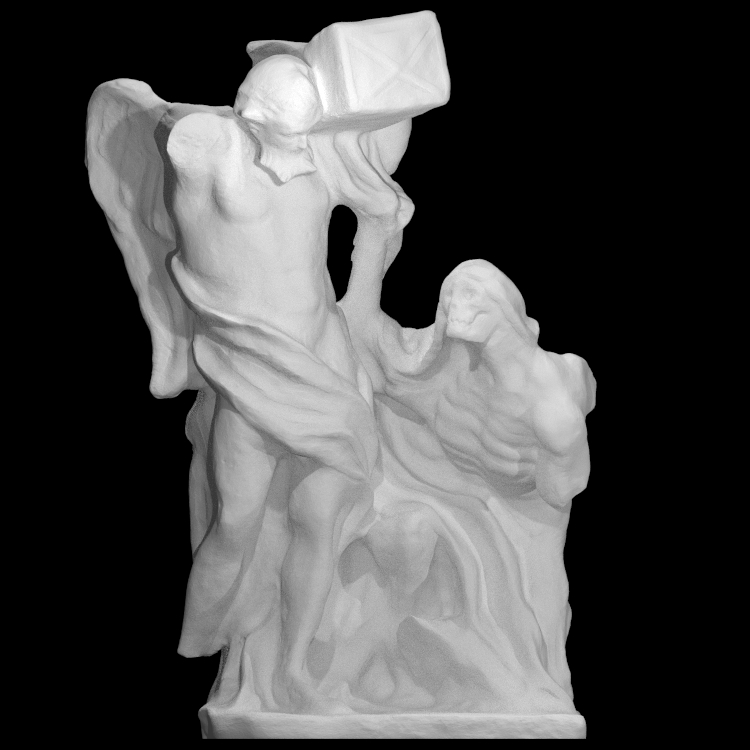
Time and Death
myminifactory
This terracotta model of Time and Death is likely a masterpiece by Gianlorenzo Bernini (1598-1680), Rome's premier Baroque sculptor. Originally crafted from pliable clay, it has been fired to become durable terracotta, still bearing the maker's fingerprints on its back. Models like this allowed artists to refine their compositions in three dimensions. Since clay is fragile, early sketches were often preserved by firing them for safekeeping in studios, but they had already gained popularity among collectors during the sixteenth century as proof of an artist's creative process. This model, depicting Time dominating Death, conveys a powerful message: the passage of time ensures the deceased's reputation endures through fame (or their soul is redeemed). Here, Time lifts the coffin out of Death's grasp, thus thwarting his prize. Death's missing arm was probably holding open the entrance to a catacomb, or underground burial chamber, indicated by the circle roughly incised on the ground. Death appears to emerge from the earth itself, his skeletal form half decomposed and otherworldly. He meets Time's gaze, signaling a silent understanding in which he must concede defeat. Yet, he retains a tight grip on the shroud, with muscles tensed - a last desperate attempt to seize the coffin. Time and Death are commonly found in contemporary Roman tombs, where they appear interchangeably as reminders of mortality. This piece confirms the triumph of immortality while equally providing a reminder of death's omnipresence and inevitability. The sculptor, likely Bernini himself, retains the traditional depiction of 'Father Time', while drawing from classical imagery in the representation of a muscular torso and flowing hair, reminiscent of figures like Laocoön and Greek gods. The suggested movement of Time's mantle, which snakes around his body, combined with the upward thrust of his torso and arms, creates a dynamism typical of Bernini's sculpture. Similarly, the heightened dramatisation of the scene characterises the theatricality of Baroque art. Gallery location: Europe 1600-1815, Room 7, The Sheikha Amna Bint Mohammed Al Thani Gallery, case CA1 This object is part of "Scan The World". Scan the World is a non-profit initiative introduced by MyMiniFactory, through which we are creating a digital archive of fully 3D printable sculptures, artworks, and landmarks from across the globe for public access. Scan the World is an open-source, community-driven effort; if you have interesting items around you and would like to contribute, email stw@myminifactory.com to learn how you can help. Scanned: Photogrammetry (Processed using Agisoft PhotoScan) Courtesy of the Victoria and Albert Museum, London.
With this file you will be able to print Time and Death with your 3D printer. Click on the button and save the file on your computer to work, edit or customize your design. You can also find more 3D designs for printers on Time and Death.
